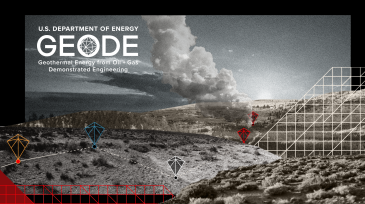Energy transition
The emergency permitting rules aim to accelerate geothermal energy development. Ormat Technologies' three Nevada projects will be the first to benefit from the streamlined process, with environmental reviews cut from years to weeks.
Sponsored
Altitude Energy Partners optimized drilling efficiency by minimizing dysfunctions and protecting downhole components. Their directional drilling team ensured consistent curves and laterals through precise BHA design, modeling, and trajectory control—reducing nonproductive time and drilling costs, and achieving a 100% improvement in efficiency by pad completion.
The times are changing and so are our industry’s prospects, as hydrocarbons are now recognized as cardinal to affordable energy security for the conceivable future. But, in avoidance of suspense, the answer to the headline question is “absolutely.” Here we look at the rationale why.
-
A recent report from Wood Mackenzie highlights the role of natural gas in supporting renewables and reducing emissions.
-
Closed-loop geothermal systems have entered the new-energy arena to generate electricity using the underground as a heat exchanger.
-
Equinor will reduce investments in renewables over the next 2 years by 50% to $5 billion and will increase its focus on oil and gas production, expecting more than 10% growth from 2024 to 2027.
-
The companies said they plan to work together on developing geopressured geothermal systems for low-carbon energy storage and geothermal power generation.
-
Greenhouse gases are woven into every stage of a well’s life, which presents challenges that demand creative solutions that do not require too much capital.
-
Wood Mackenzie reports that prices would need to rise, capital discipline would need to evolve, and spending would need to increase by 30% for the upstream sector to meet demand in a delayed energy transition scenario.
-
The agreement aims to accelerate new commercial technologies that address challenges with geothermal development.
-
GEODE is a consortium led by Project InnerSpace and the Society of Petroleum Engineers and funded by the US Department of Energy’s Geothermal Technologies Office.
-
Geothermal energy in the US has historically been concentrated in the West due to favorable geology, but emerging technologies have expanded the possibilities.
-
New IEA Report: Next-Generation Geothermal Can Go Global, But Oil and Gas Industry Must Show the WayThe upstream sector could help unlock geothermal energy’s potential but up to $1 trillion in project spending would be necessary over the next decade, the report says.













